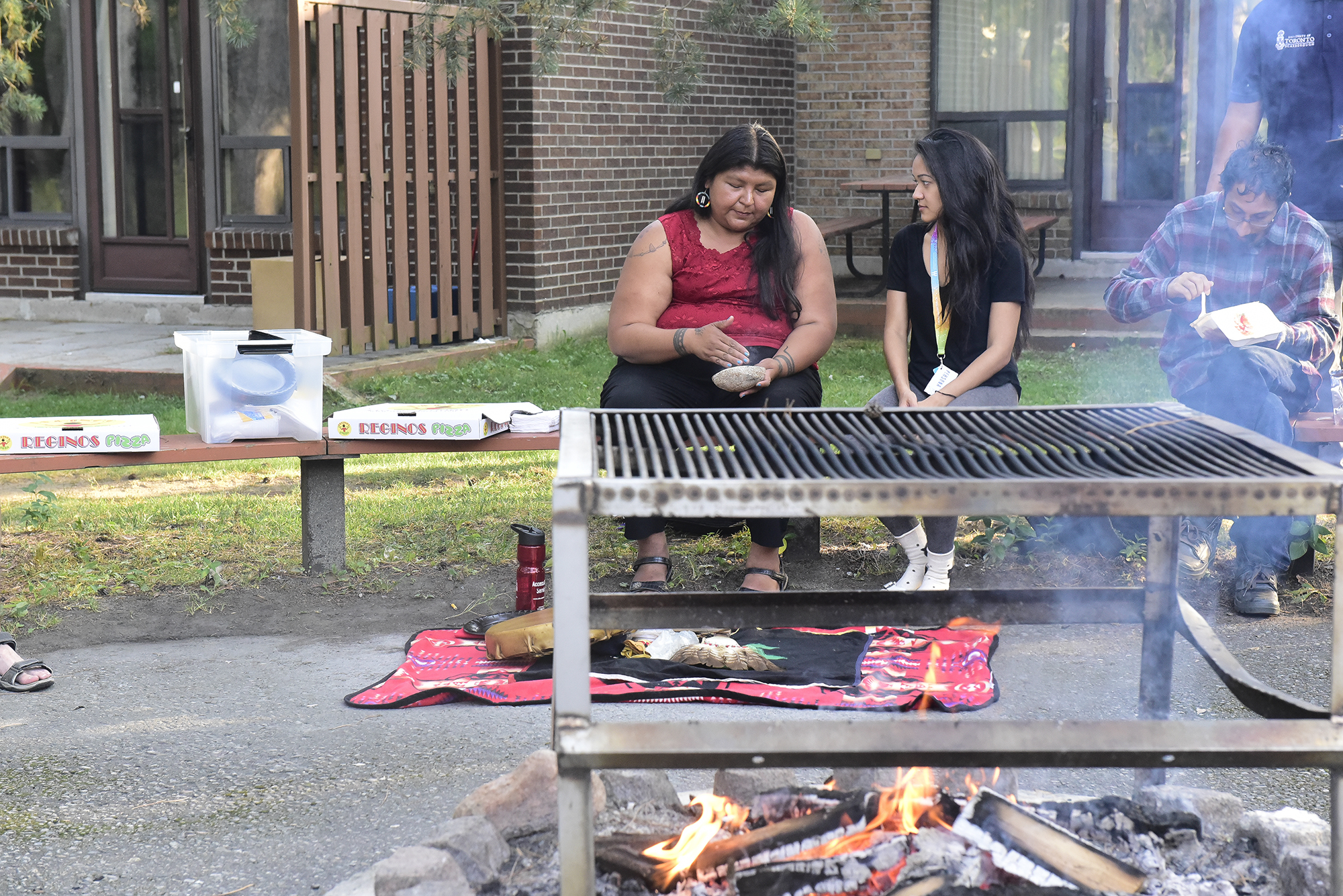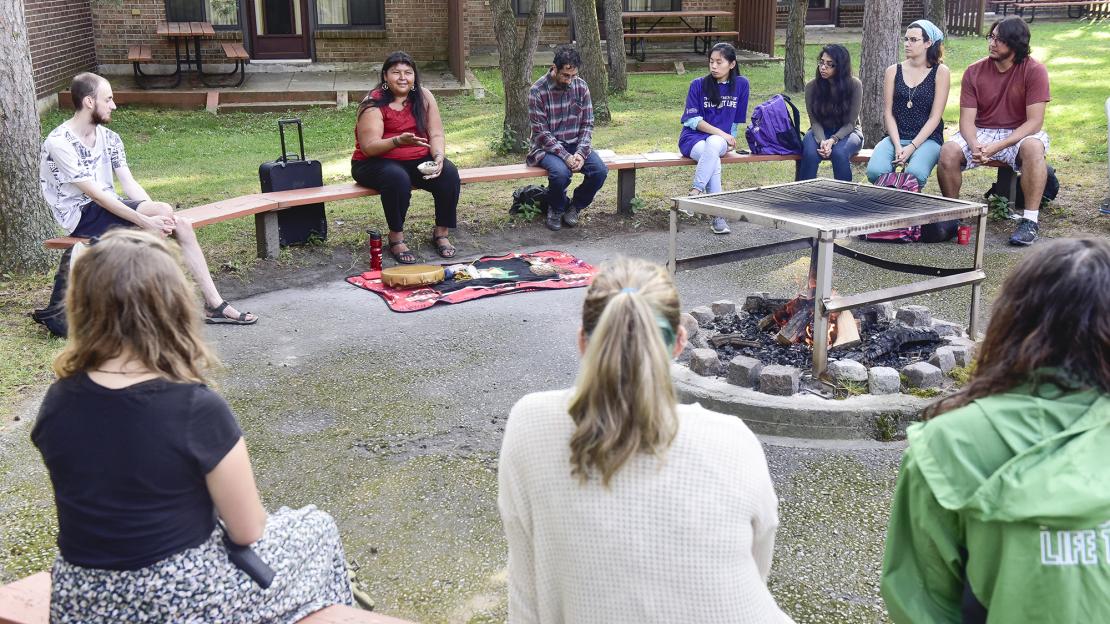A learning initiative that focuses on Aboriginal ways of life, healing and culture has launched for a fourth year at the University of Toronto Scarborough.
“The thing I love about learning circles is that it creates an environment where people can learn about Indigenous knowledge and also be their vulnerable selves,” says Brian Millado, community engagement programs facilitator at U of T Scarborough.
Led by Traditional Indigenous Elder Wendy Phillips in collaboration with the Department of Student Life, the Indigenous Learning Circles started as the Indigenous Seminars in 2012. The Department of Student Life launched the series as part of an effort to increase knowledge of Indigenous cultures at U of T Scarborough. Each event featured workshops and speakers from the Indigenous community. In 2013, the seminars were incorporated into what is known today as the Indigenous Learning Circle, originally led by Indigenous Elder Cat Criger.
Today the Learning Circles take place every month in the Ralph Campbell Lounge and participation is open to all U of T Scarborough students, faculty and staff.
On Sept. 18, a group of about 20 gathered at the Residence Fire Pit for the launch. Phillips began the evening by explaining and conducting a smudging ceremony that invites participants to clear the space around them with the smoke of sage, acknowledging mind, body and spirit.
The evening went on to include refreshments, a lesson on ceremonial tools and a Sharing Circle, where participants – most not identifying as Indigenous – shared their names, backgrounds and sometimes why they were participating in the learning circle.
“The Sharing Circle exists to build community relationships at UTSC and support the well-being of our students,” says Phillips.
“The Sharing Circle exists to build community relationships at UTSC and support the well-being of our students,” says Indigenous Elder Wendy Phillips.
Going forward, Learning Circles will feature several topics of discussion led by Phillips.
“The lessons are a collaboration,” says Millado. “Wendy listens to what students are talking about.”

(Photo by Ken Jones)
“If students are stressed with mid-terms, Wendy might gear the Circle lesson to mental health topics. With changing seasons, she’ll talk about the importance of the environments.”
Millado says he’s pleased with the communities that are formed as individuals learn more about Indigenous cultures.
“Some people rely on these events for mental wellness,” says Millado. “It’s great to see students use this platform as a place where they can feel safe, included and share their hardships that they’ve been going through in a non-judgemental space.”
“It’s great to see students use this platform as a place where they can feel safe, included and share their hardships that they’ve been going through in a non-judgemental space," says Brian Millado.
The Learning Circle is just one Indigenous Outreach initiative organized by the Department of Student Life. Another initiative, the Indigenous Experiential Journey Trip, is an opportunity for U of T students to connect with an Indigenous Community on traditional teaching land with the goal of providing participants with direct, meaningful opportunities for cultural exchange and dialogue with First Nations peoples.
Thinking in the future, Millado says the goal of Indigenous Outreach includes creating long-term access points for Indigenous identifying students in the Scarborough area.
“I think we’re doing a great job creating short-term access points,” he says, “but the next step is to go outside the boundaries of our campus and help create opportunities for Indigenous and non-Indigenous identifying students.”
“The next step is to join community initiatives, be allies and develop access opportunities for current Indigenous students and prospective incoming Indigenous students.”
